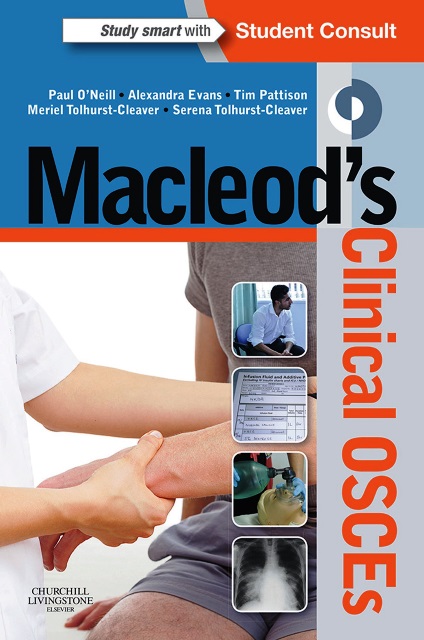Contents
1 Introduction to the OSCE 1
1.0 Introduction to the book 3
1.1 What is an OSCE? 4
1.2 How to get the most from this book 5
1.3 General tips for OSCE candidates 8
1.4 Specimen OSCEs 10
1.5 Sample mark-sheet and summary of learning sheet 11
2 History taking 15
2.0 Introduction to history taking in OSCEs 17
2.1 Chest pain 20
2.2 A breathless young woman 24
2.3 Persistent diarrhoea 29
2.4 Abdominal pain 33
2.5 Collapse 37
2.6 Back pain 41
2.7 Vaginal bleeding 45
2.8 An unwell child 50
2.9 A child with breathing problems 55
2.10 Persistent low mood 59
2.11 An injury whilst drunk 64
3 Physical examination 69
3.0 Introduction to examination skills 71
3.1 Examining the patient with a murmur 72
3.2 Peripheral arterial examination 77
3.3 Examining the breathless patient 81
3.4 Examining a lump in the scrotum 86
3.5 Examining the patient with liver disease 90
3.6 Assessing a stoma 94
3.7 Examining vision 97
3.8 Lower limb sensory examination 101
3.9 Limb weakness 106
3.10 The patient with a tremor 111
3.11 Thyroid status and neck examination 115
3.12 Examination of the hands 121
3.13 Knee examination 125
3.14 Shoulder examination 129
3.15 Obstetric examination 133
3.16 Newborn examination 138
3.17 Examination of a child with lymphadenopathy 143
3.18 Testing cognitive function 147
3.19 Breast lump examination 150

4 Practical skills 155
4.0 Introduction to practical skills 157
4.1 Recording an ECG 158
4.2 Inserting an intravenous cannula 163
4.3 Arterial blood gas sampling 168
4.4 Capillary blood glucose measurement 172
4.5 Urinary catheter insertion 176
4.6 Speculum examination 180
4.7 Suturing a wound 184
4.8 Adult basic life support 189
4.9 Death verification 193
5 Ethics, communication and explanation 197
5.0 Introduction to ethics, communication and explanation 199
5.1 Explaining inhaler technique 200
5.2 Obtaining consent for gastroscopy 205
5.3 Driving and epilepsy 208
5.4 Explaining a new diagnosis of type 2 diabetes 212
5.5 Explaining results of a cervical smear test 216
5.6 Discussing non-accidental injury (NAI) with a parent 221
5.7 Assessing a patient’s capacity 225
5.8 Discussing starting an SSRI 229
5.9 Breaking bad news 235
5.10 Discussing a ‘do not resuscitate’ decision 240
5.11 Speaking to a dissatisfied relative 245
5.12 A colleague who drinks too much 249
6 Prescribing and handover 253
6.0 Introduction to prescribing and handover 255
6.1 Prescribing antibiotics 256
6.2 Medication review 260
6.3 Prescribing postoperative fluids 264
6.4 Prescribing insulin 269
6.5 Prescribing analgesia 274
6.6 Handover of two patients 278
6.7 Referring a patient 281
7 Recognising and managing acutely unwell patients 285
7.0 Introduction to assessing acutely unwell patients 287
7.1 Acute management of chest pain 288
7.2 Acute management of breathlessness (1) 293
7.3 Acute management of breathlessness (2) 297
7.4 Acute management of abdominal pain 302
7.5 Acute management of a diabetic emergency 306
7.6 Acute management of sepsis 311
7.7 Acute management of postpartum bleeding 316
7.8 Acute management of an unwell child 320
Index 325

Disclaimer:–
This Site Complies With DMCA Digital Copyright Laws. We Neither Own the Copyrights of the Content Nor Responsible for the Hosting Sites.
We Are Sharing This Material With Our Audience For Educational Purposes Only. We Highly Encourage Our Visitors To Buy The Books/Subscriptions From the Respected Owners.
Checkout Our DMCA Policy in the Disclaimer.
If Anyone with the Copyright Claim wants us to Remove the Content Kindly Contact Us Here.
